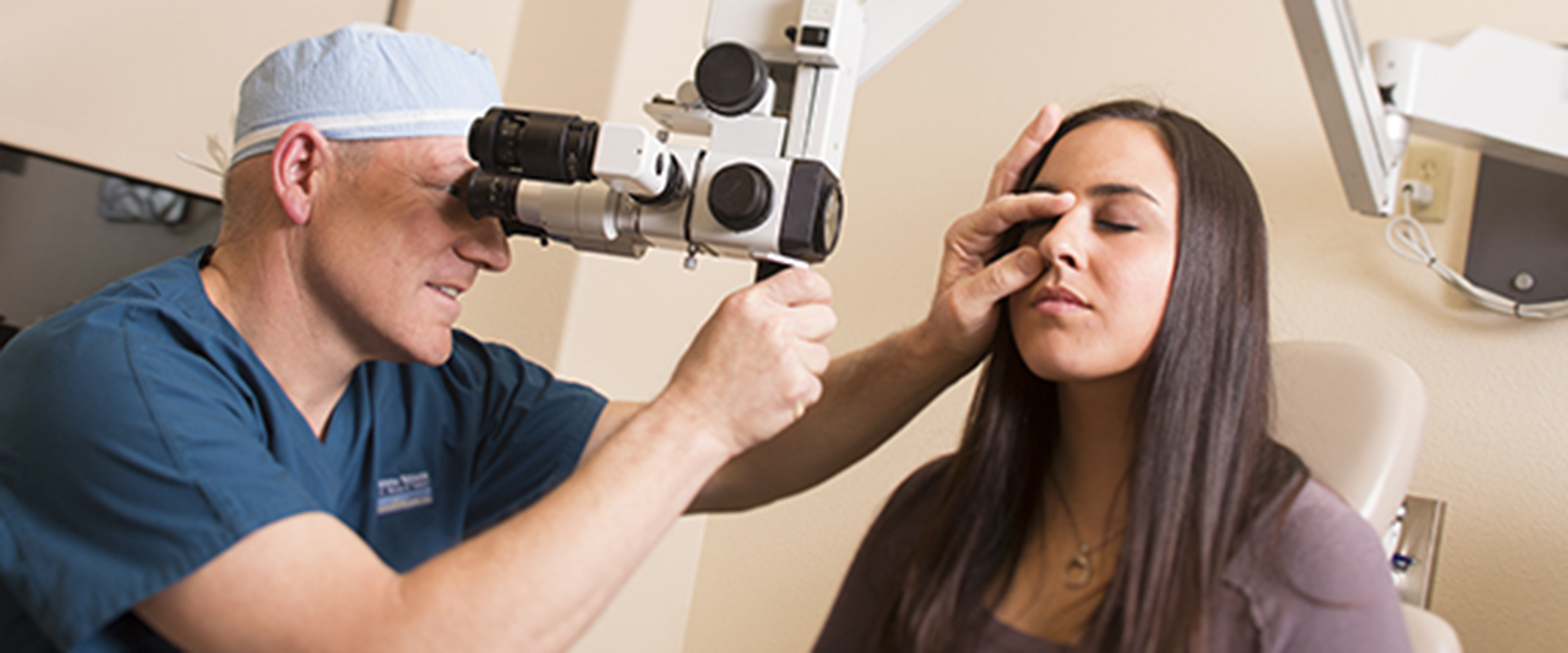A deviated septum can be diagnosed and treated by your ear, nose and throat specialist. To examine your nose, the doctor will use a bright light and an instrument to open your nostrils, look at your nasal tissues and determine if the septum is displaced.
Patients who experience health issues–including difficulty with nasal congestion, sleeping or breathing–are generally good candidates for surgery to correct a deviated septum. This surgery is commonly known as septoplasty.
Sierra Nevada ENT’s doctors specialize in septoplasty and can help those suffering from a deviated septum get back to breathing easier. With locations in Reno, Carson City, Fallon and Gardnerville, we offer deviated septum surgery near you. Schedule an appointment with Sierra Nevada Ear, Nose & Throat today.
What is a Deviated Septum?
The septum is the mucous membrane covered cartilage in the nose that separates the nostrils. A deviated septum occurs when the thin wall between your nasal passages, the nasal septum, is displaced or bent. Typically, it sits centered between the nostrils. If the septum is not centered, it makes one or both sides of your nasal passage smaller and can cause health complications. In many cases, there may be no symptoms of a deviated septum.
A severely deviated septum will reduce airflow on one or both sides of your nose, making it difficult to breathe. This additional airflow on one side of the nasal septum can also cause nosebleeds for certain people. Nasal blockage also may occur from a deviated nasal septum.
A deviated septum is very common in today’s world. According to the American Academy of Otolaryngology - Head and Neck Surgery, 80 percent of all septums are deviated to some degree. A deviated septum requires medical attention if it causes health issues or negatively impacts your quality of life.
How to Tell if You Have a Deviated Septum?
Knowing that most septums are deviated to some degree, there is a good chance your septum is too. Here are 5 signs that you have a deviated septum:
- Nosebleeds- when your septum is not set equally between your nostrils, air has a difficult time passing through your nose, making it more likely to dry out membranes in your nose. This lack of moisture can cause your nose to bleed.
- Nasal congestion- because air does not flow as easily between your nasal passages, your head can feel stuffy, leading to added sinus pressure and headaches. This pressure can also cause pain and soreness in your face.
- Snoring- According to sleepfoundation.org, snoring affects approximately 90 million American adults, 37 million on a regular basis. When you sleep with a deviated septum, the nasal congestion may lead to chronic mouth breathing, loud breathing and snoring. This can also contribute to sleep apnea, a disorder in which breathing is repeatedly interrupted during sleep.
- Sinus infections- the more blocked your airway is, the more likely you are to develop frequent sinus infections, when your nasal cavities become infected, swollen, and inflamed.
- Difficulty breathing- when your septum is not even between your nostrils, the nasal misalignment can make it harder for air to pass through your nose. It is more noticeable if you have allergies or a cold.
How to Fix a Deviated Septum?
If you continue to have problems with your deviated septum, a septoplasty can be performed to repair it. Septoplasty is a surgical procedure to straighten the cartilage (and bone) between your nostrils, allowing better airflow through your nose. A septoplasty takes anywhere from 30-90 minutes to complete, depending on the complexity of the condition. You’ll be under either local or general anesthesia.
Septoplasty Procedure (Deviated Septum Surgery)
In a typical septoplasty procedure, your surgeon will make an incision on one side of the septum to access the cartilage. Then they will lift up the mucous membrane, which is the protective covering of the septum. Then, the deviated septum is moved into the correct position. At this time, bent pieces of bone or cartilage are removed. The last step is the repositioning of the mucous membrane.
You may need small internal stitches to hold the septum and membrane in place. Soft plastic splints may be necessary to keep the septum straight during healing.
To prepare for the surgery, don’t eat or drink anything after midnight the night before the procedure if you’re going to be under general anesthesia. This will help prevent vomiting and choking if you become nauseous from the anesthesia during surgery. Lastly, bring a family member or friend who can drive you home after the septoplasty. You will not be cleared to drive until the effects of the anesthesia have worn off.
Interested in Septoplasty? ENT Doctors in Reno
In 1995, after completing his residency at The Johns Hopkins Hospital, Carson City native Dr. Paul Manoukian returned to the Silver State determined to deliver the best in ear, nose and throat care. He opened locations in Gardnerville and South Lake Tahoe and was soon joined by his partner Dr. Brian Romaneschi. Since that time, they have expanded their team to serve patients throughout the Northern Nevada area.
Today, we offer septoplasty evaluation and procedures in our offices in Reno, Carson City, Fallon and Gardnerville. Our doctors specialize in the diagnosis and treatment of deviated septum issues, particularly those that negatively impact quality of life. Schedule an appointment with Sierra Nevada ENT to learn more about septoplasty options in Reno.
Book a Consultation
To meet with our highly-skilled team to discuss your deviated septum symptoms at Sierra Nevada Ear Nose & Throat, please give us a call or schedule an appointment at one of our four locations.
